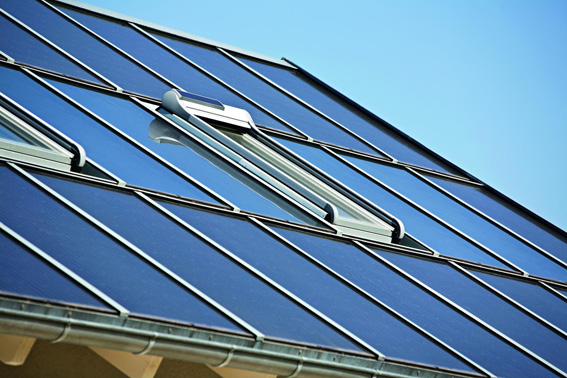Comparing solar panels with solar tiles; which should you get?
Solar panels have been around for decades, employed in multiple fields for the simple purpose of harnessing the power of the sun, an unlimited energy resource. Solar panels have become increasingly common in both the public and private sector, being used in neighborhoods as well as businesses and projects.
However, a more recent innovation of solar panels, the solar tiles, are said to have everything solar panels have, with the addition factor that they can replace or snap onto regular roof tiles. A fairly new product, solar tiles have had their issues like any other young product, but appear to have solved all their problems and have become the ideal buy for those looking into solar.
So, when you compare a solar panel to solar tiles, which is the better buy for you?
A Look at Solar Tiles
A solar tile is basically a thin-film solar panel modified to replace or attach to a roof tile; they are normally made of silicon and are the most lightweight and durable type of panel available. Solar tiles were developed somewhere in the last 15 years, and had the initial problem of low efficiency, as silicon thin-film does not produce as much electricity as any other type of panel.
The more recent solar tiles are changing that, however; a new design of CIGS in solar cells is far more efficient than silicon while retaining durability and lightweight properties, becoming the perfect candidate for Dow Powerhouse’s solar tiles. Dow’s tiles are rated at the same efficiency as other solar panels and are inexpensive, making them the perfect next new product to put solar tiles in the market.
Solar Panels and How they Run
The linkage of photovoltaic cells, usually made of silicon, in series creates solar modules, panels, arrays, and so forth. Solar panels come as mono-crystalline, poly-crystalline, and amorphous.
Mono-crystalline solar panels are made up of one unifying type of cell, making them more expensive but also more efficient, while poly-crystalline varies in cells, making them inexpensive and slightly less efficient.
Amorphous panels are thin-film panels, which are the thinnest and most lightweight, but least efficient. All these different panel types allow users options as far as getting the type of panel they want, and there are also other ways to help boost efficiency/lower cost, like getting a solar tracker or getting involved in SREC’s.
There are solar installers in both the solar panel and solar tile field that can get solar technology installed in your home at low costs and the fastest time possible, such as Cazeault Solar and OkSolar.
The Comparison: Solar Panels vs Solar Tiles
When comparing solar panels and solar tiles, there are a few things to keep in mind: solar tiles made by companies such as Dow Powerhouse and Certain Teed are rated to be better than most solar panels, but they are still a relatively new technology. Meanwhile, there are companies such as SunPower, SolarCity, and Kyocera that sell award-winning solar panels that homeowners everywhere are buying.
When comparing the two, there really isn’t a better option now; however, solar tiles could pull ahead and be the better product within the next few years, but solar panels are still one of the best options in powering your home. Both solar panels and solar tiles do a good job of producing green electricity at low costs to help save money fast for any house.











